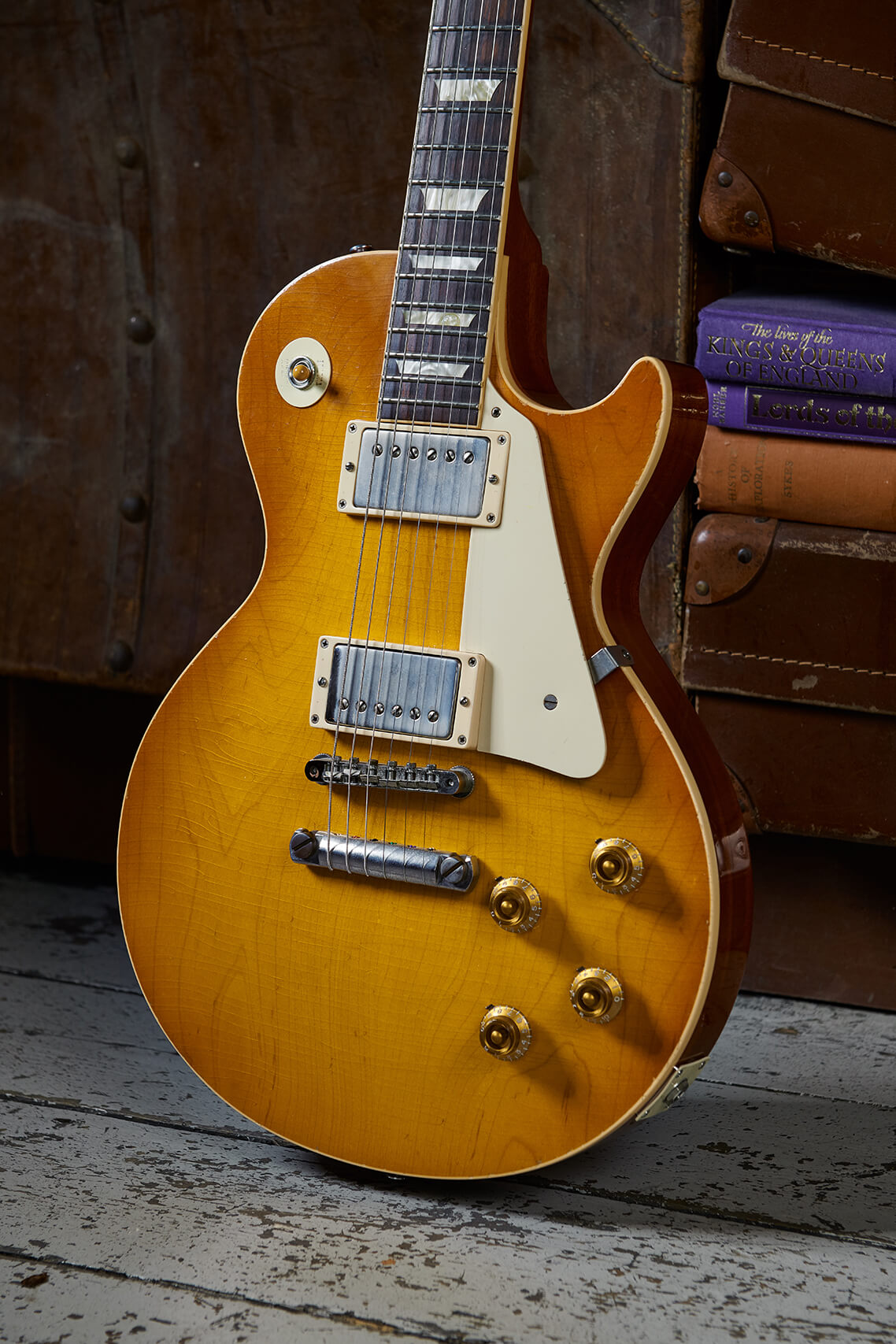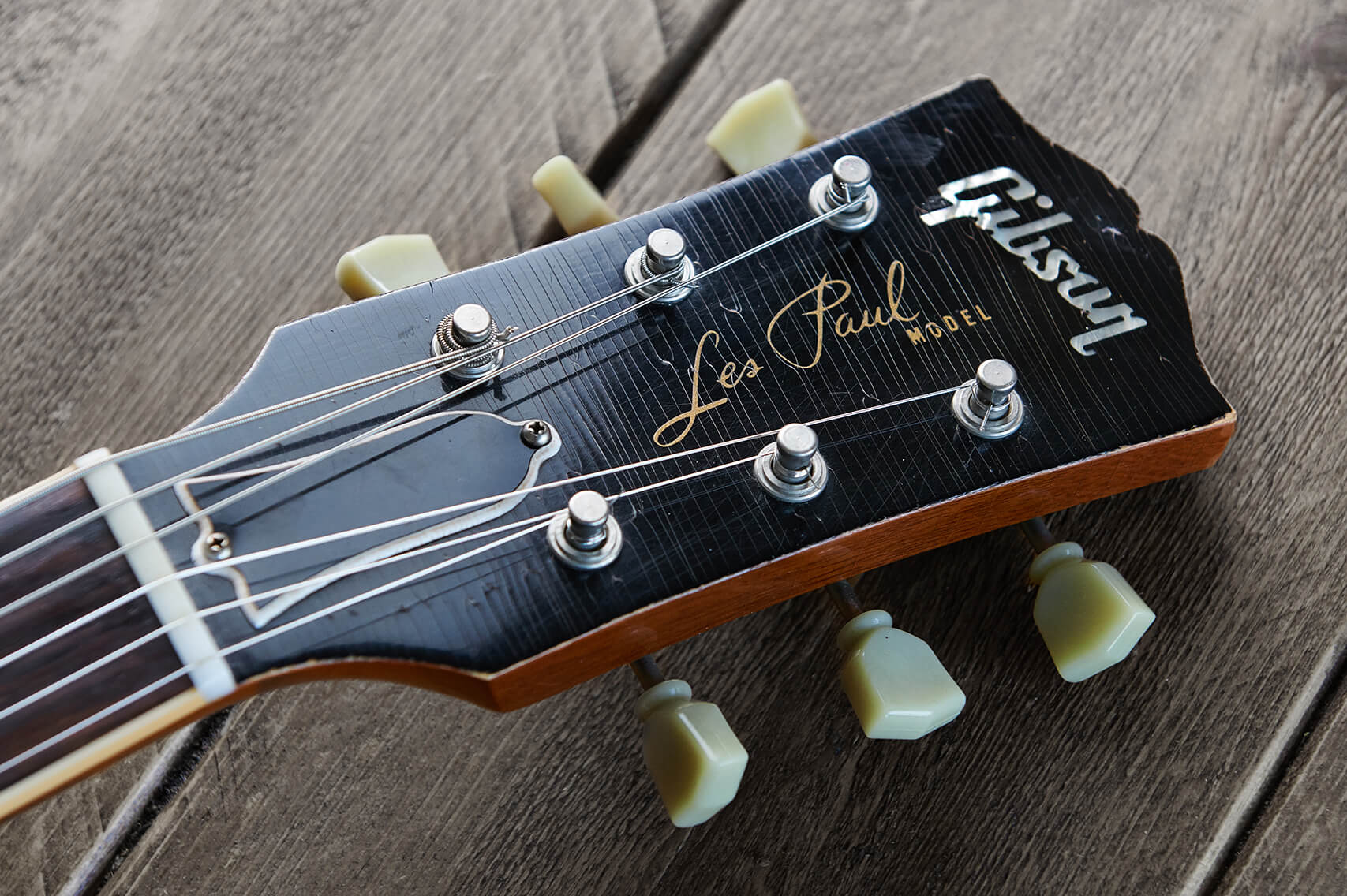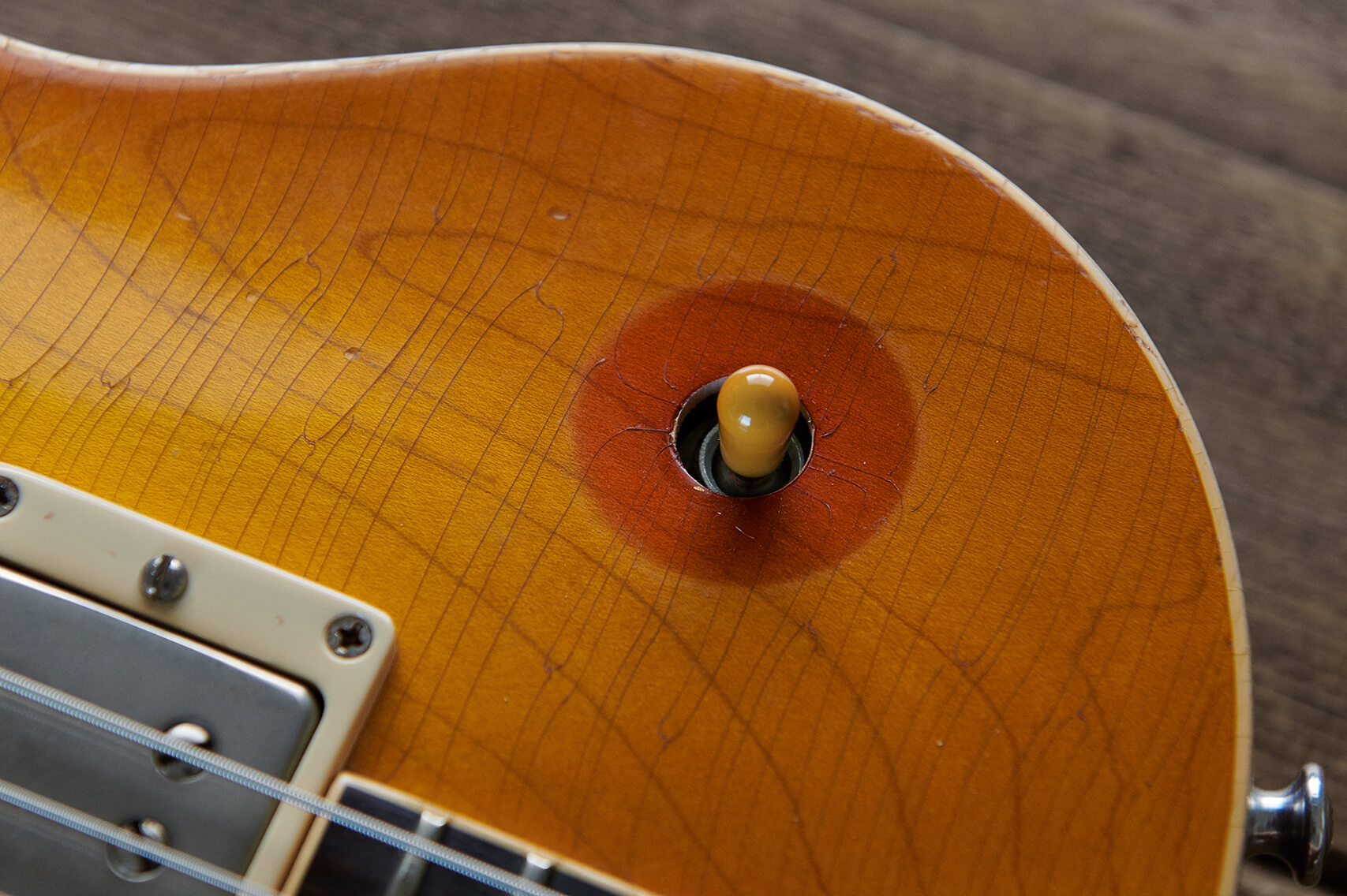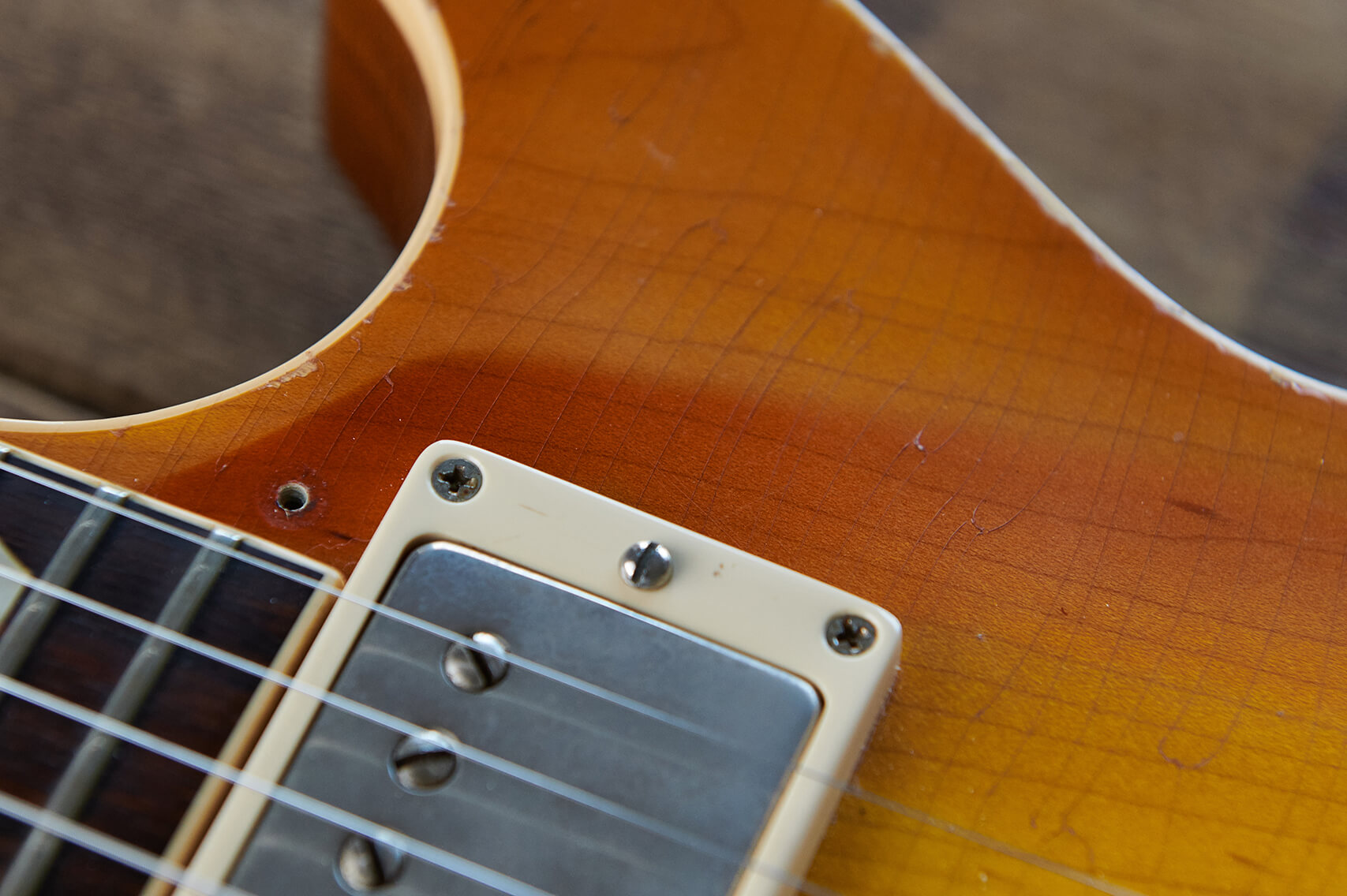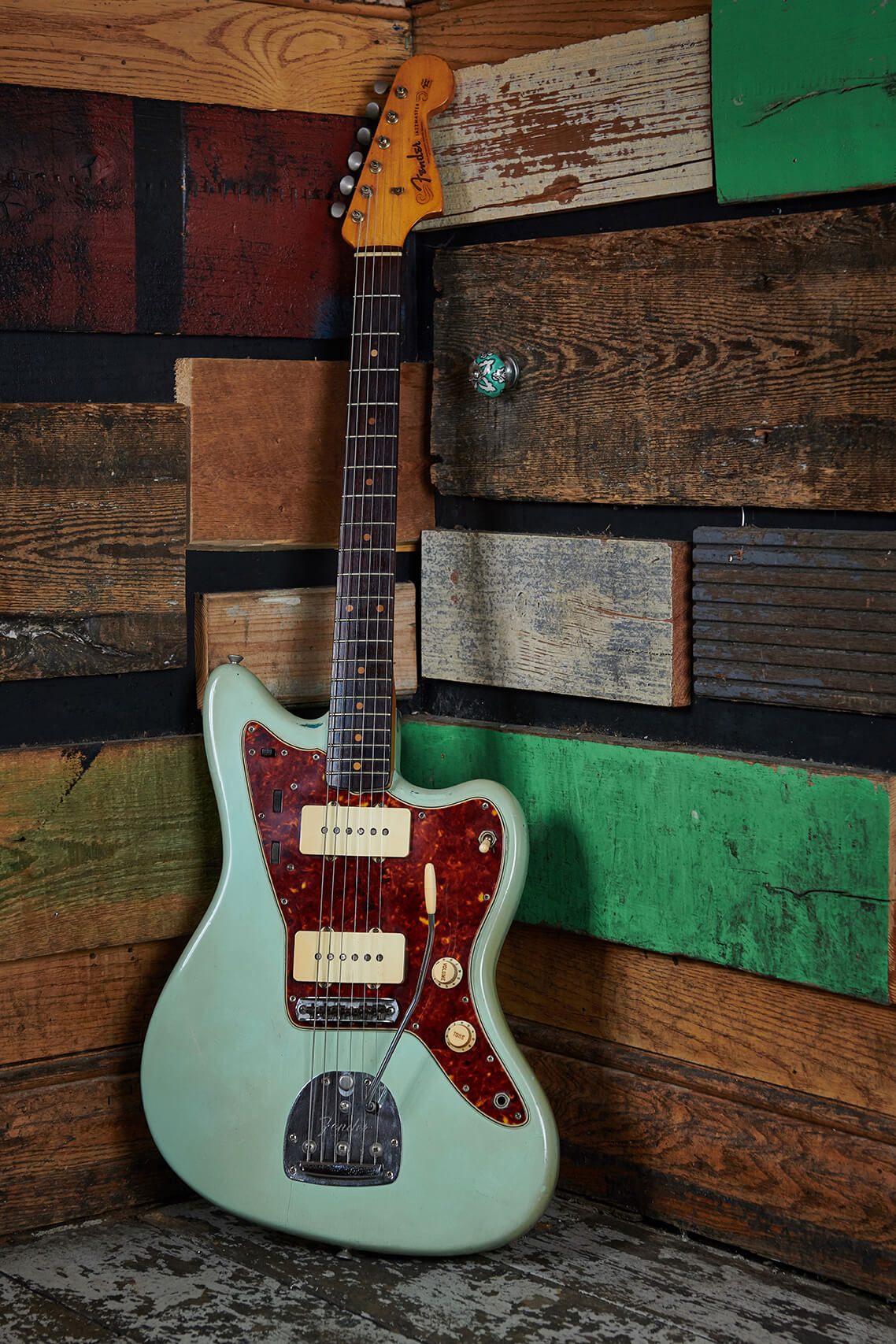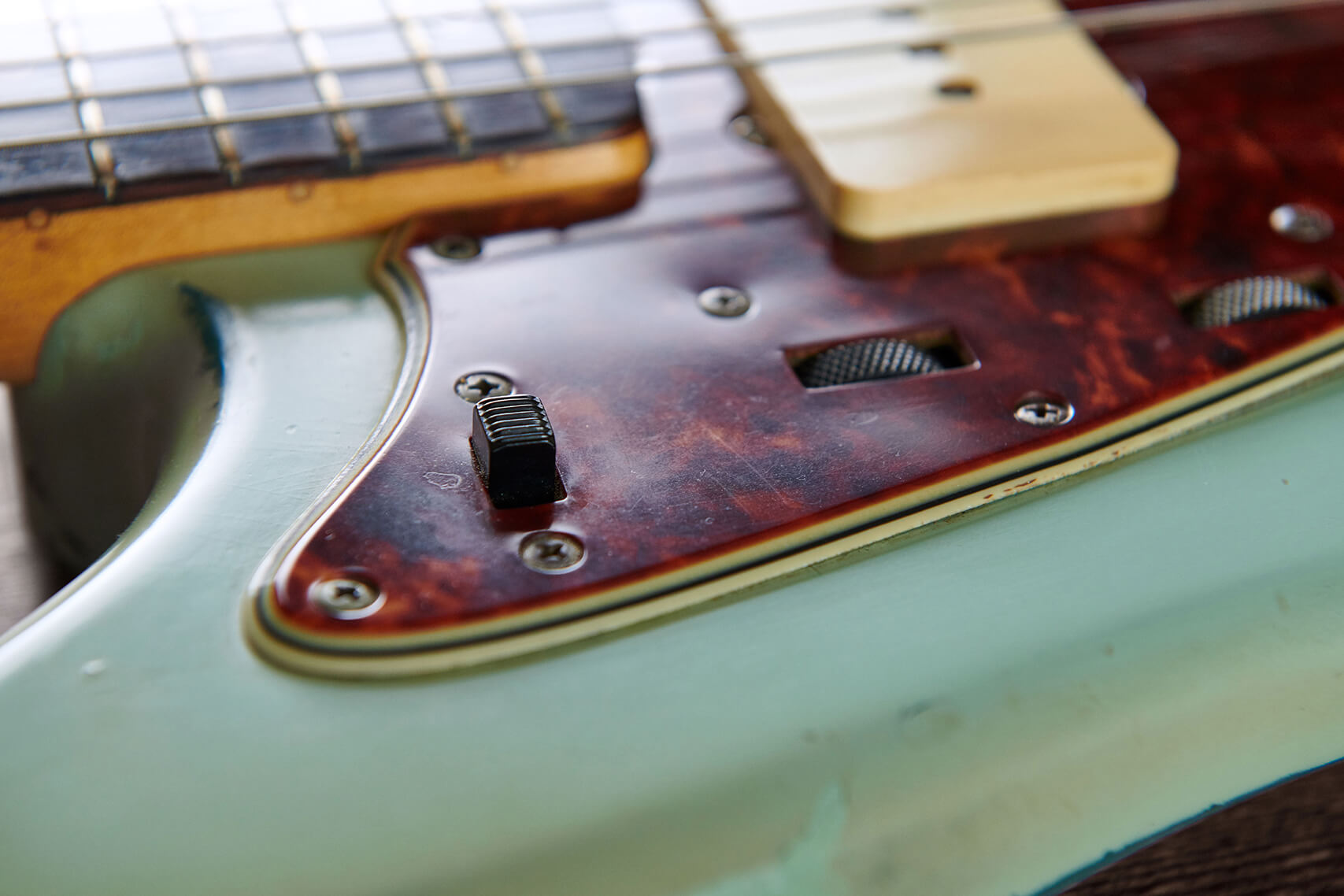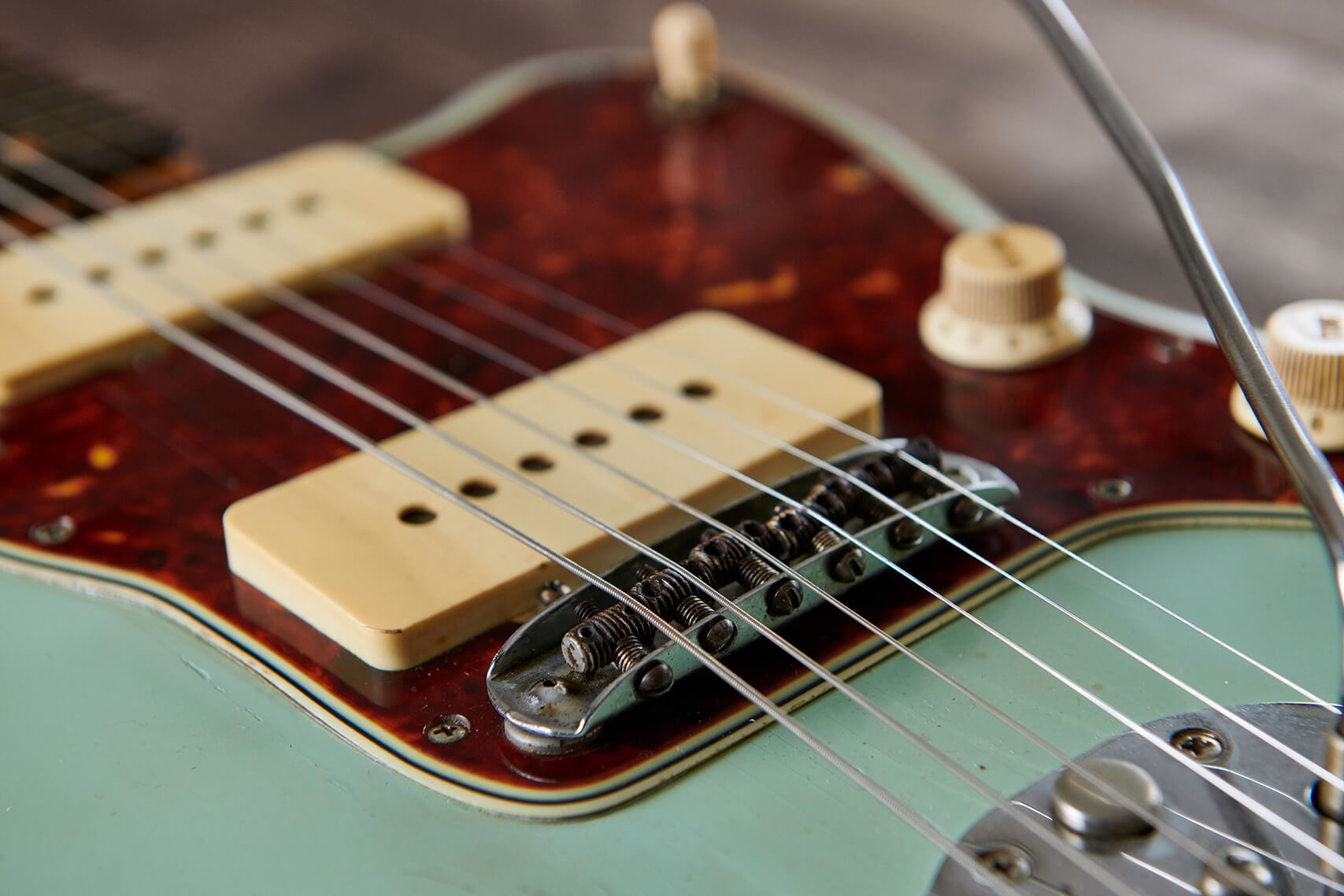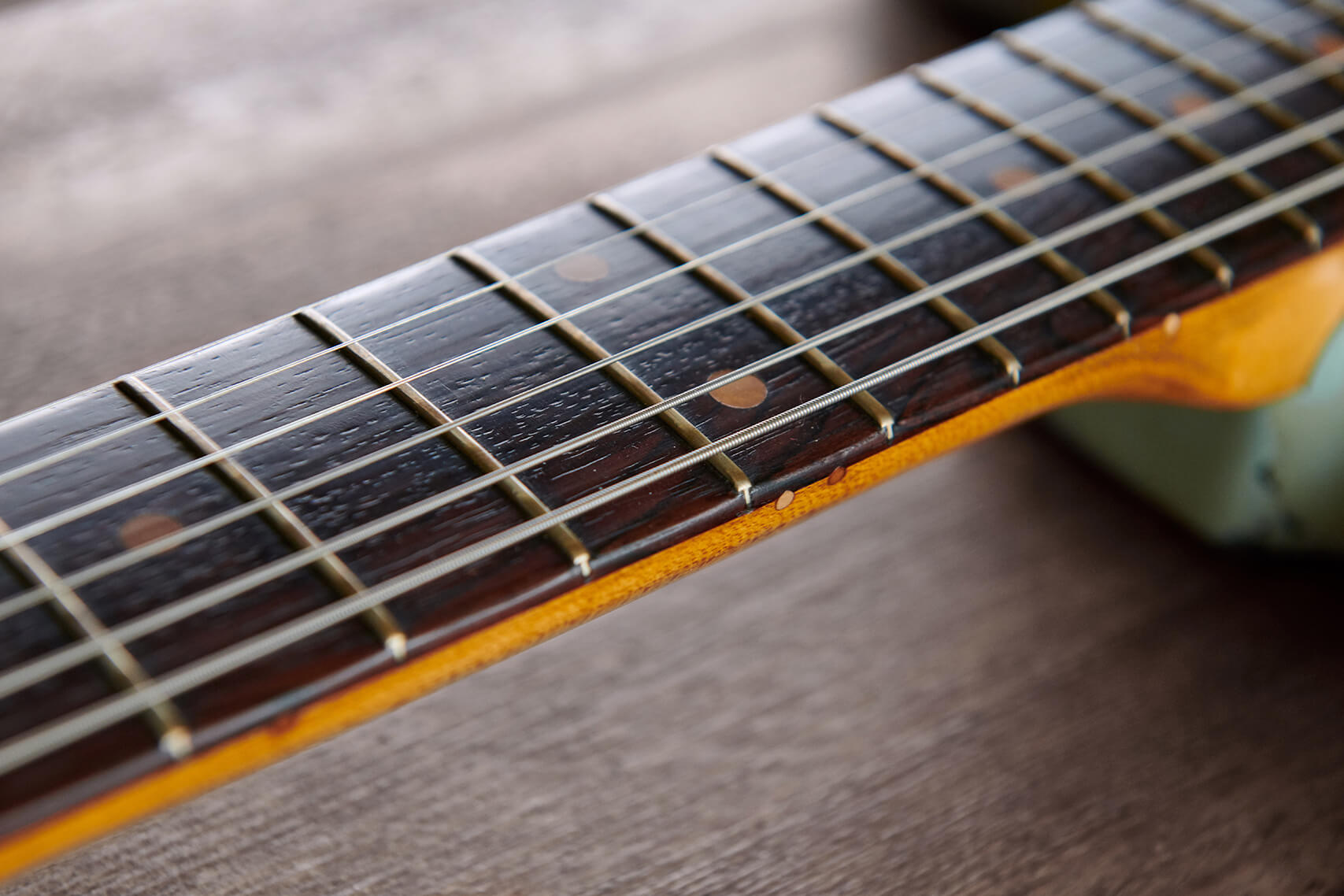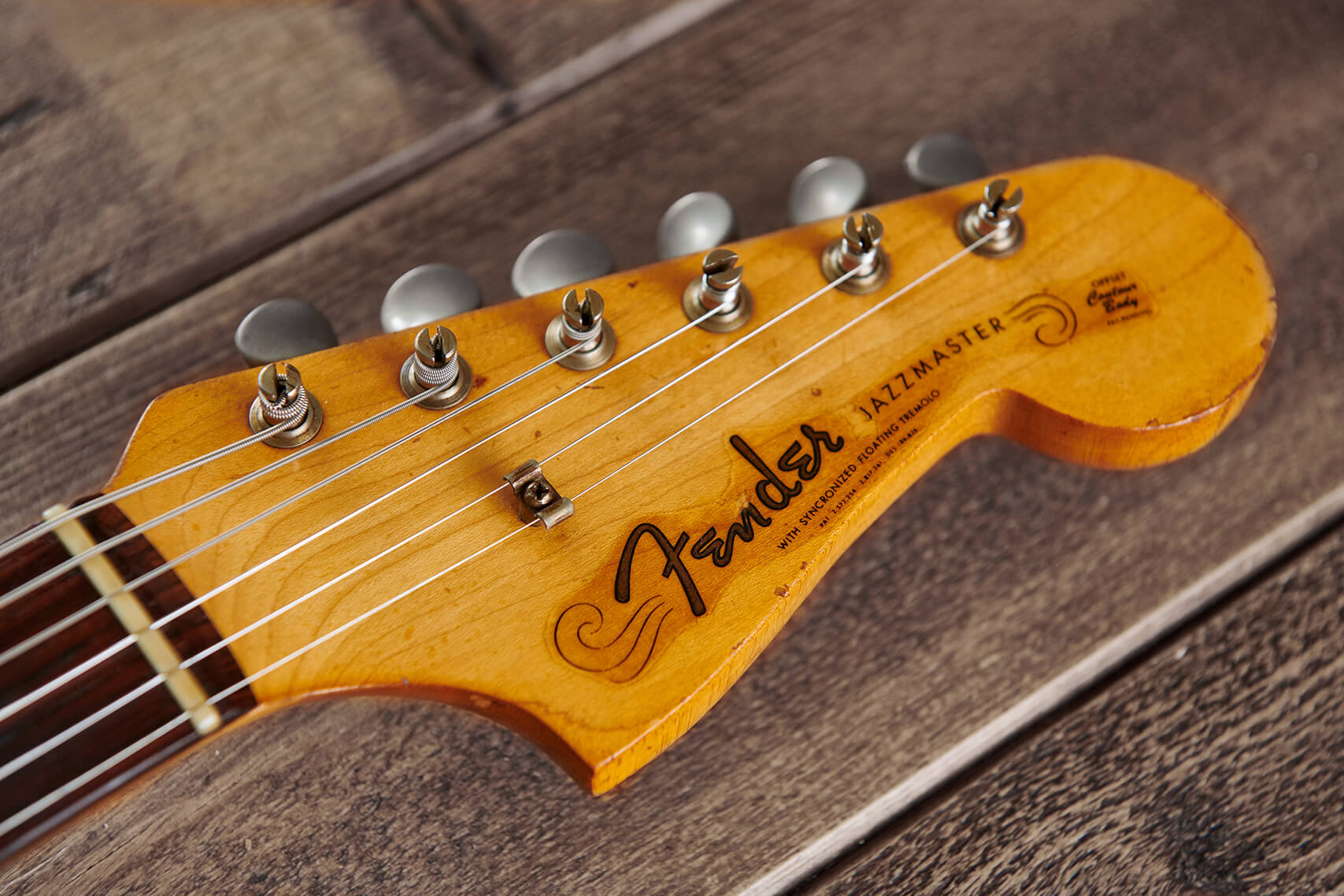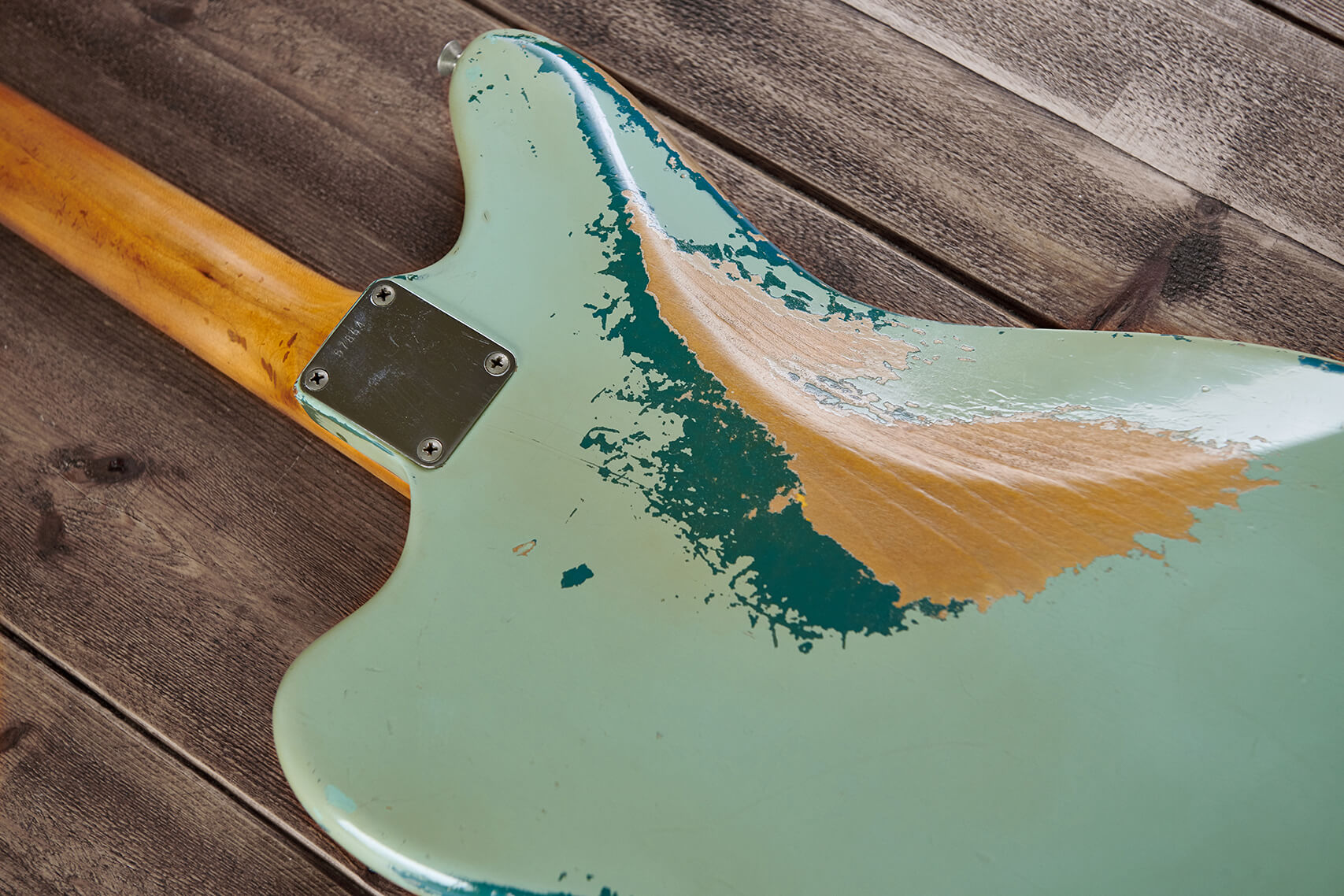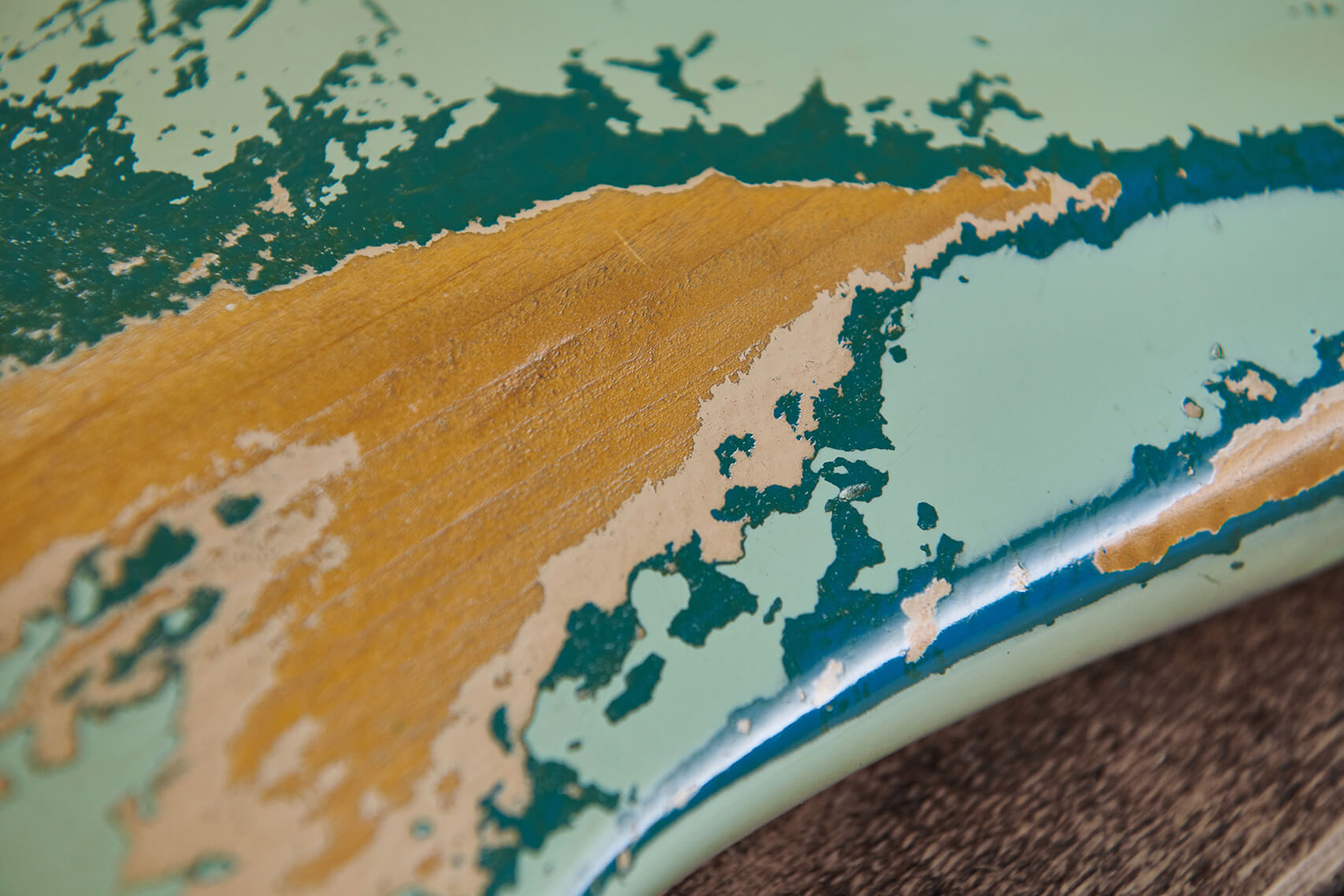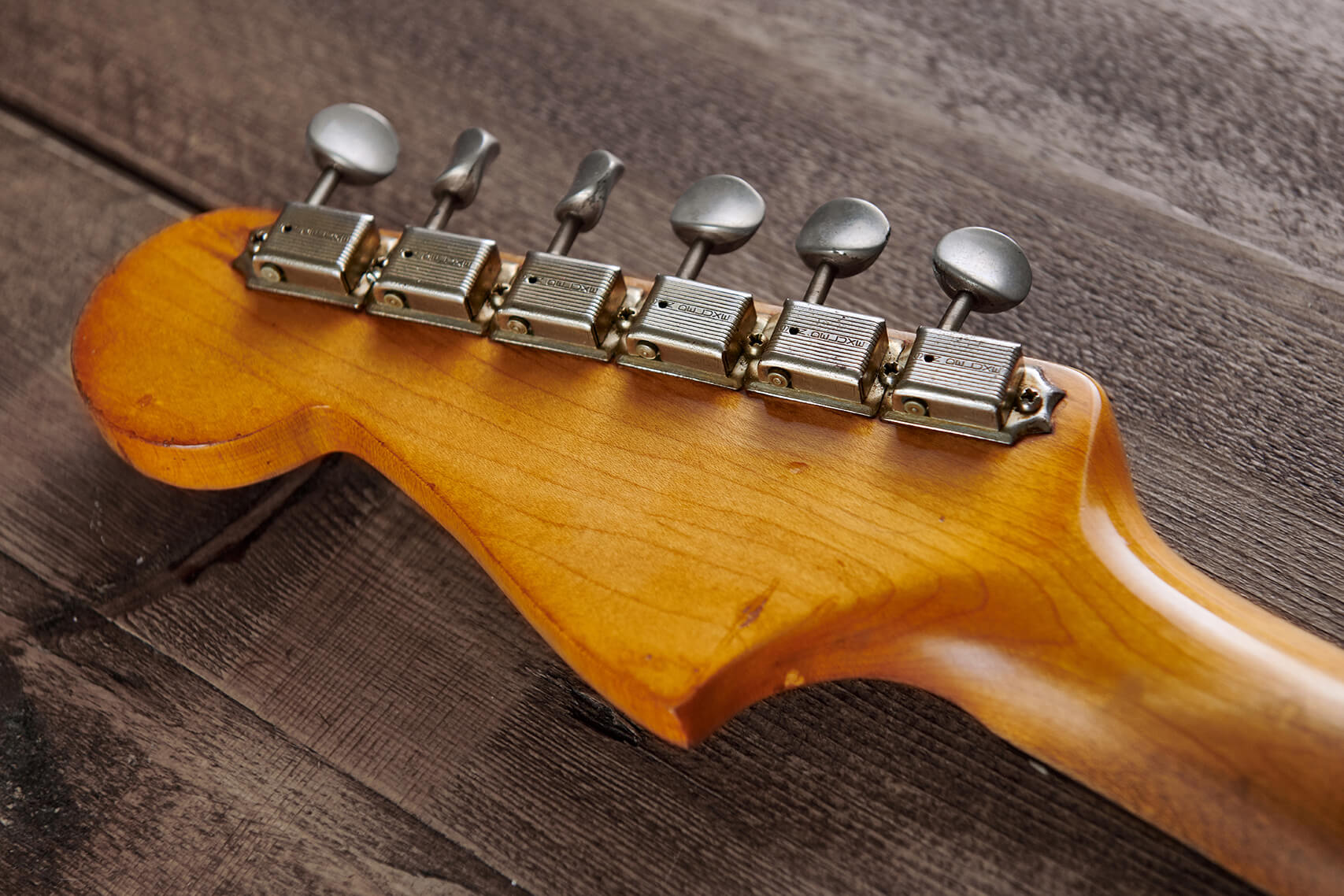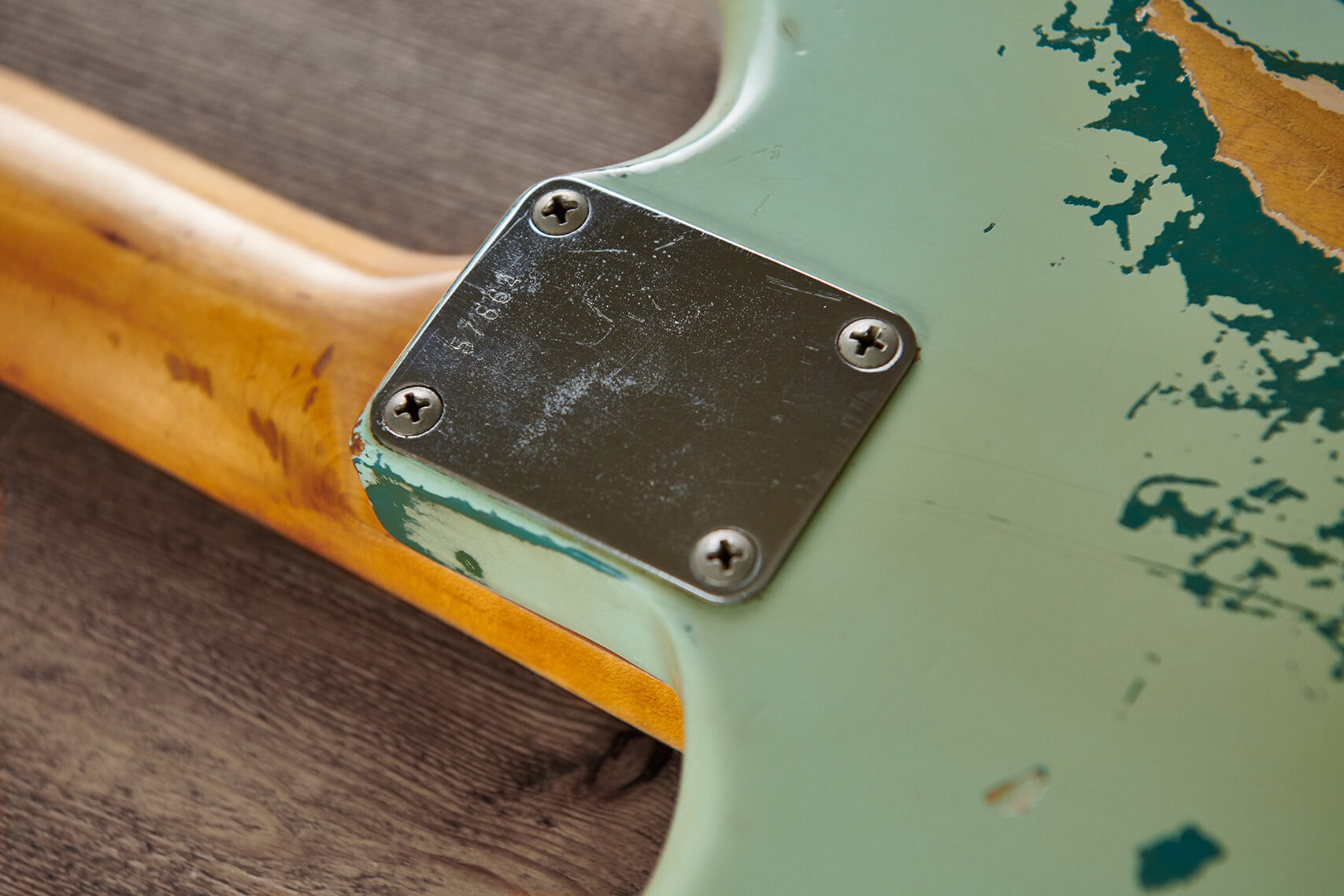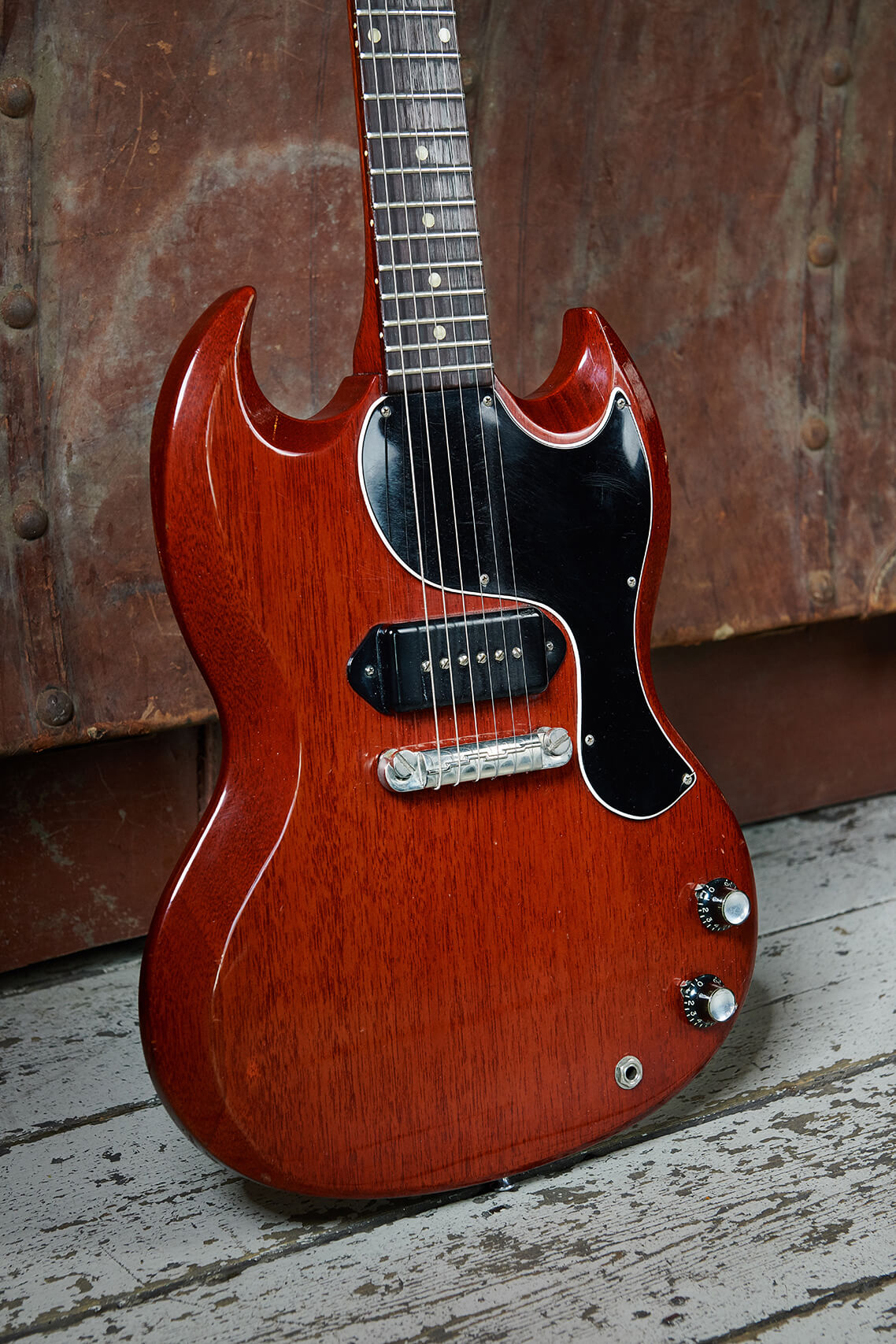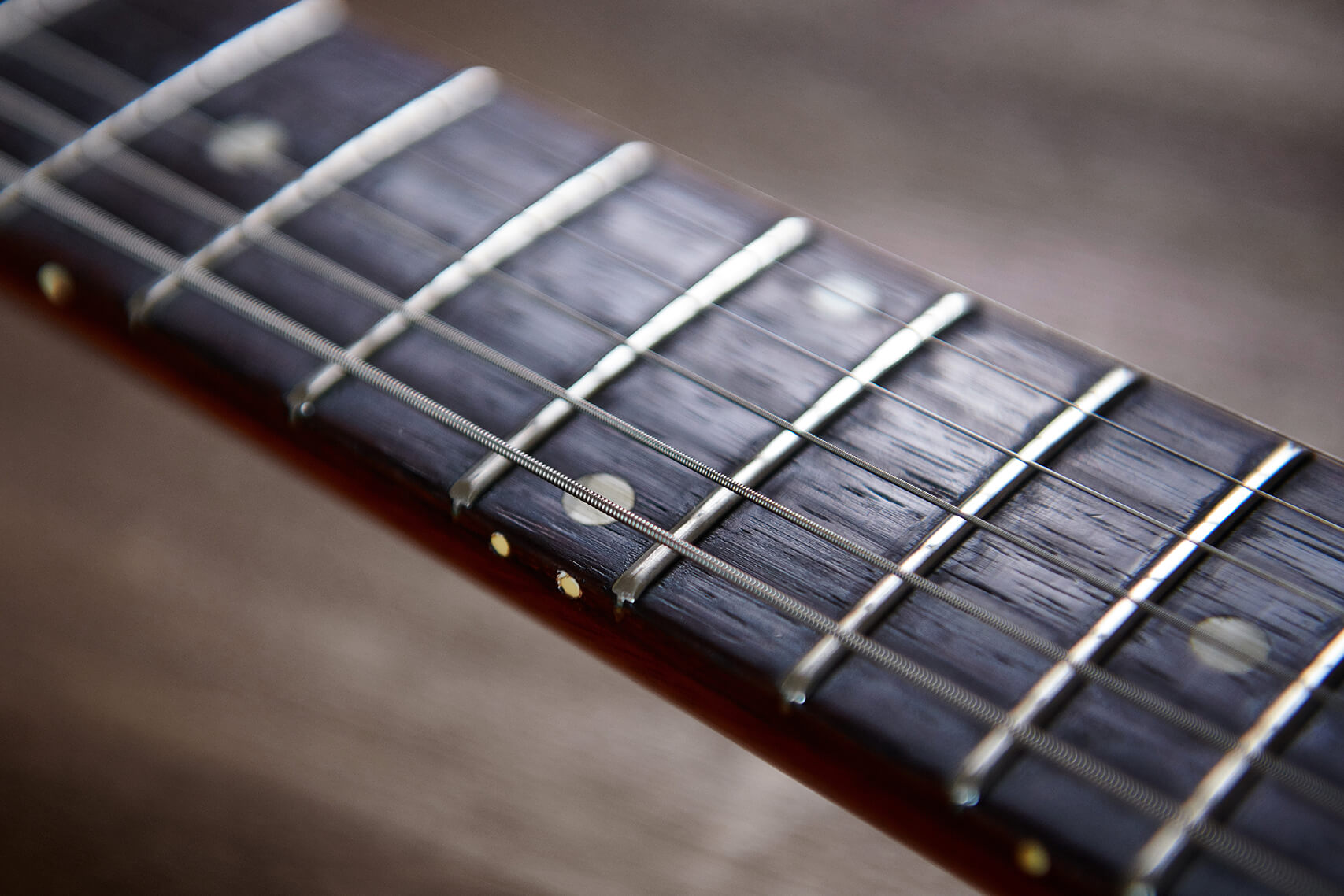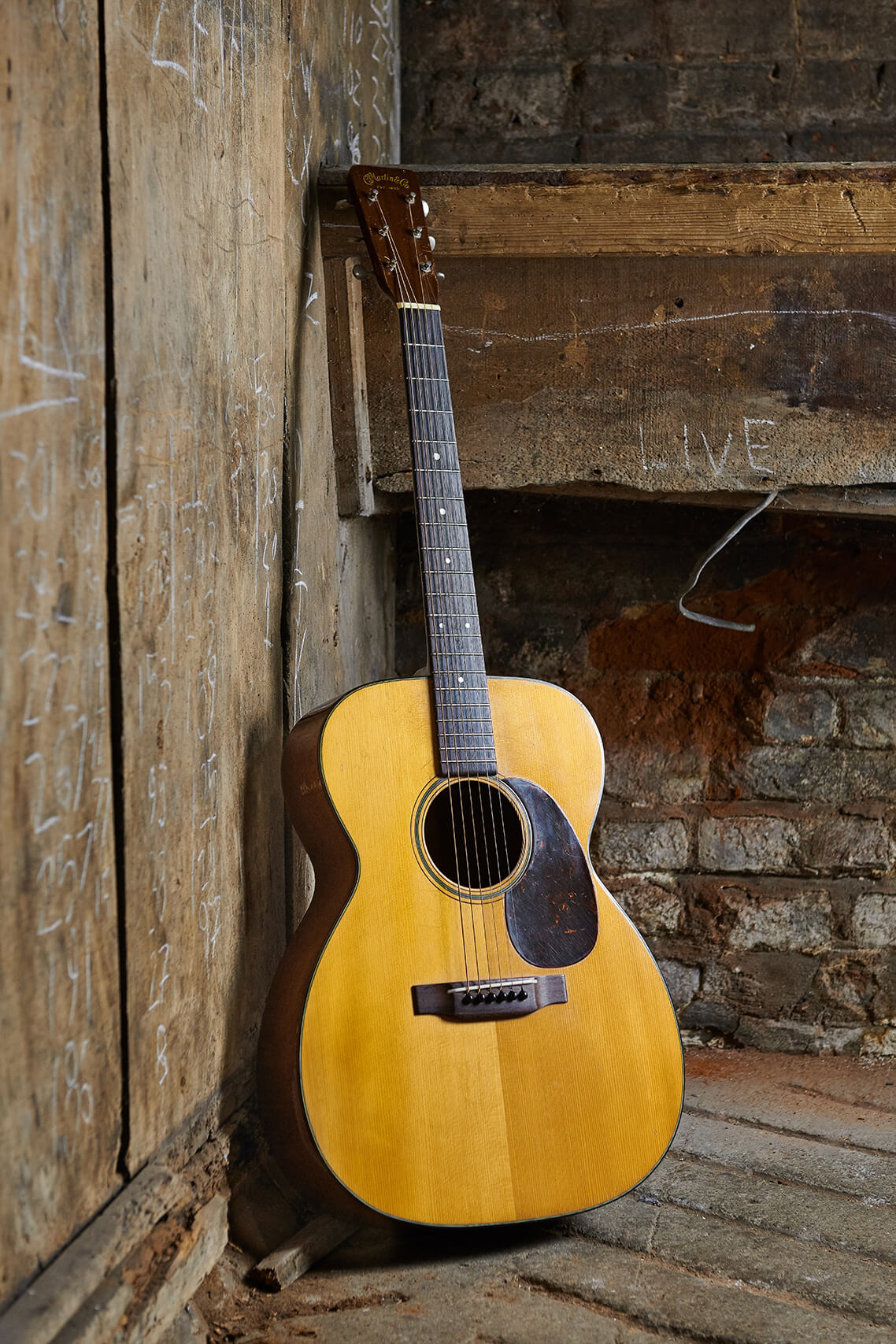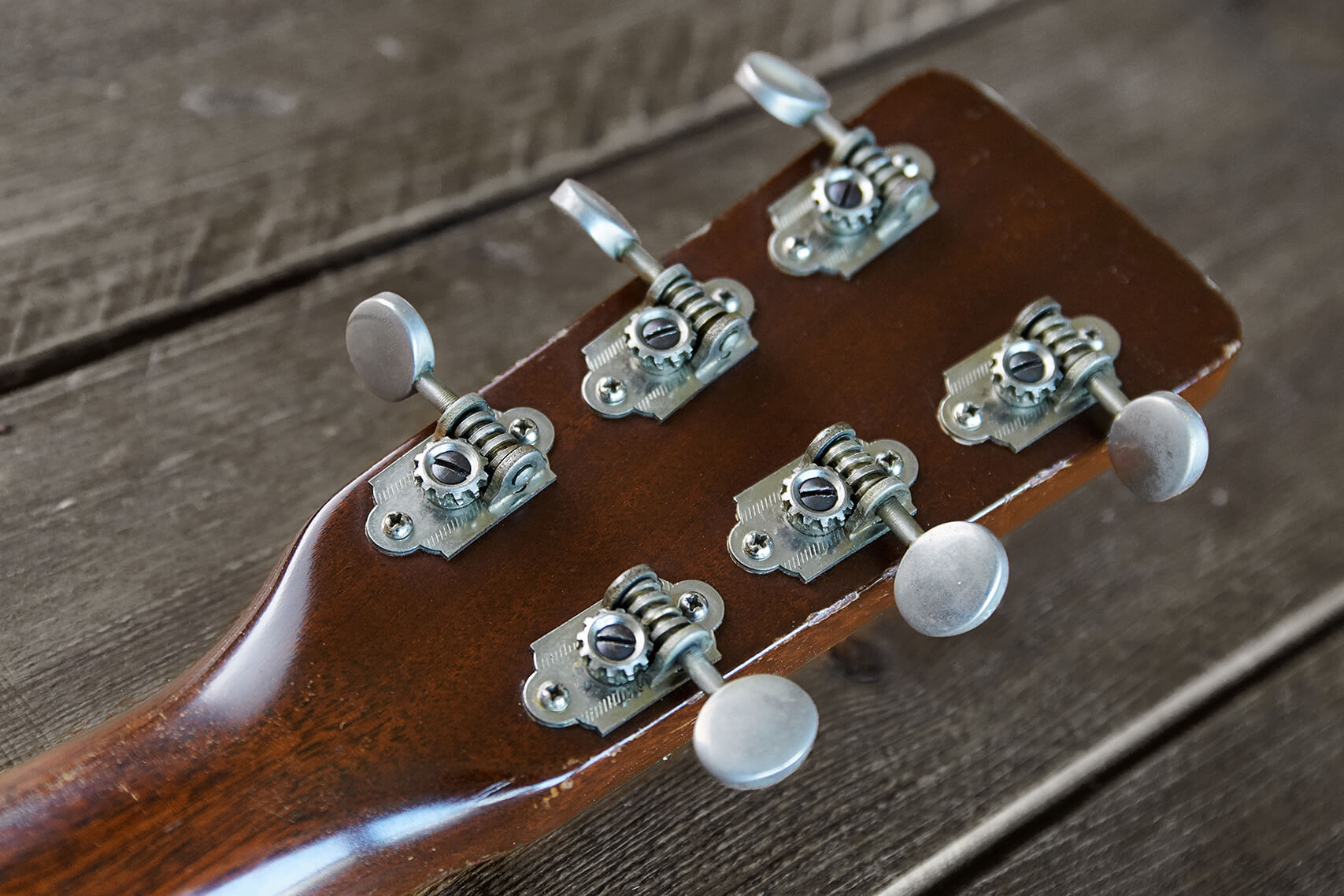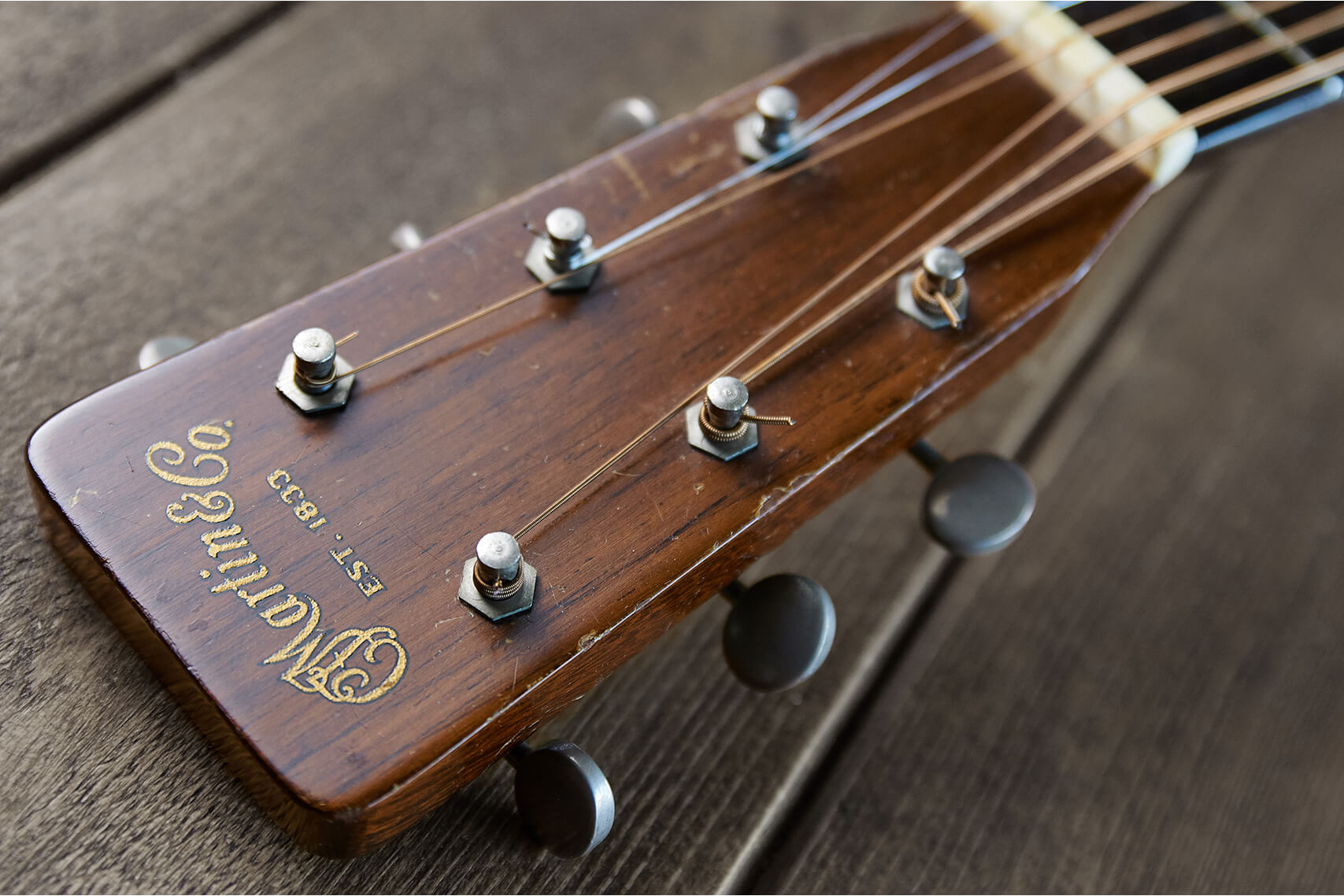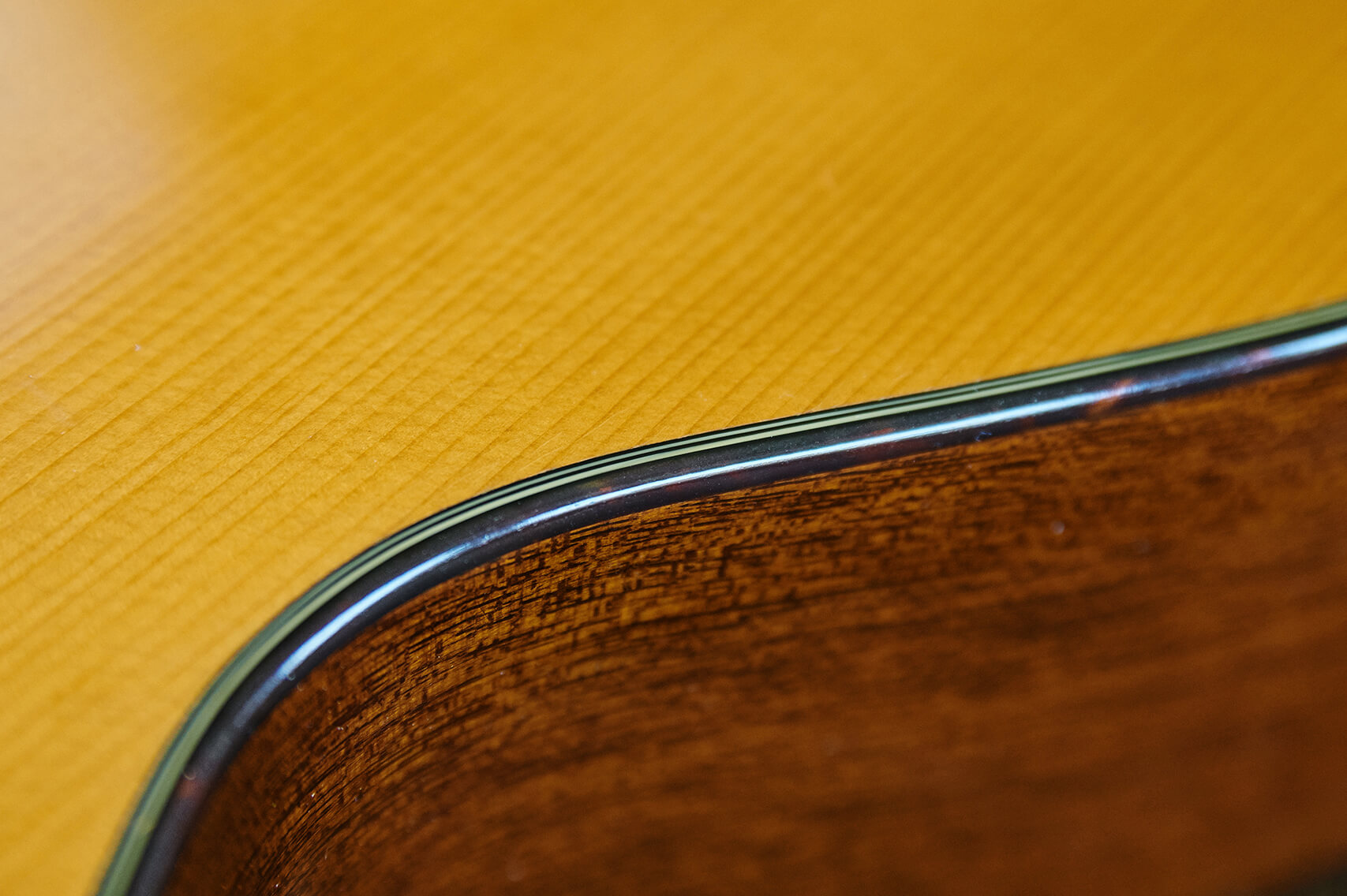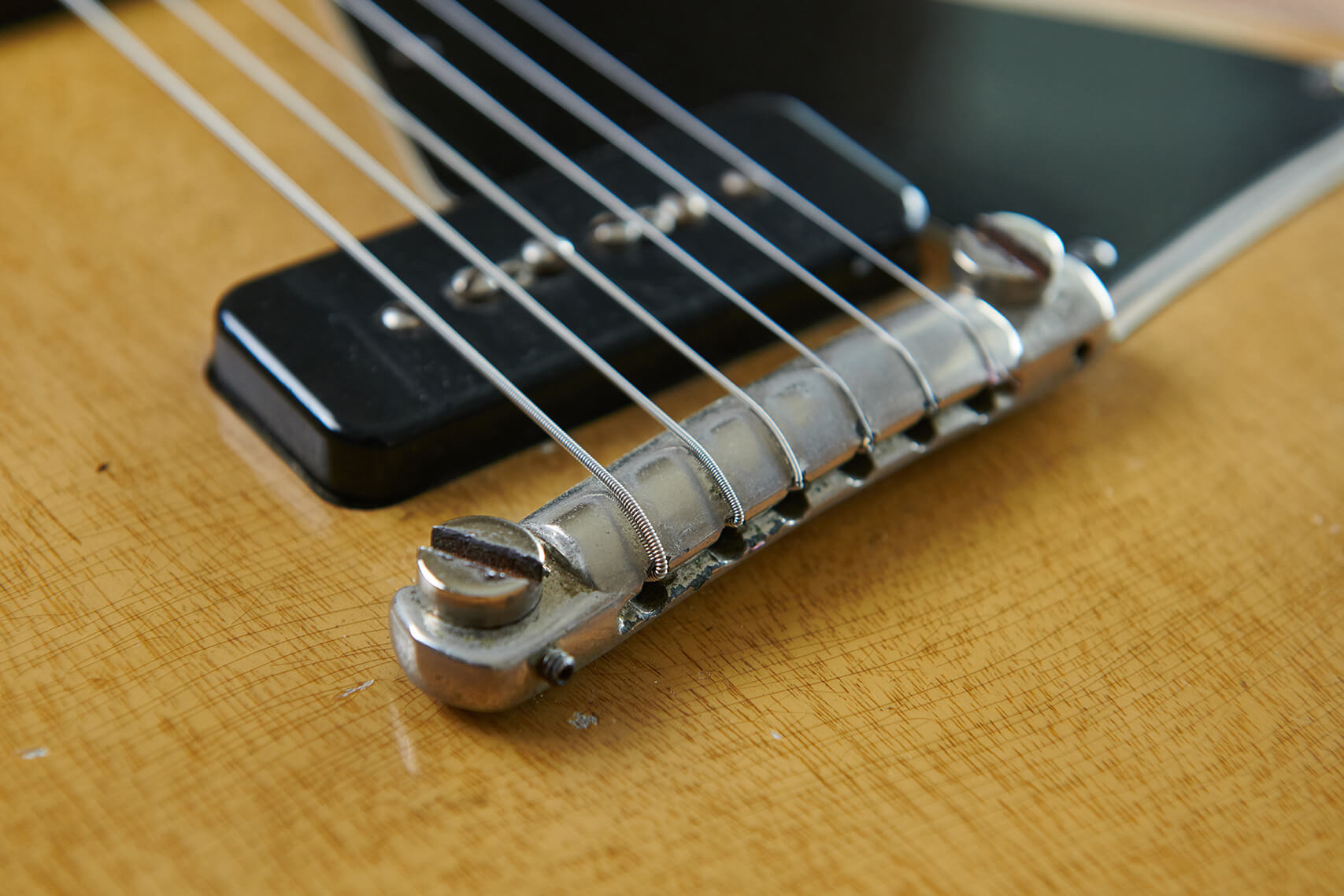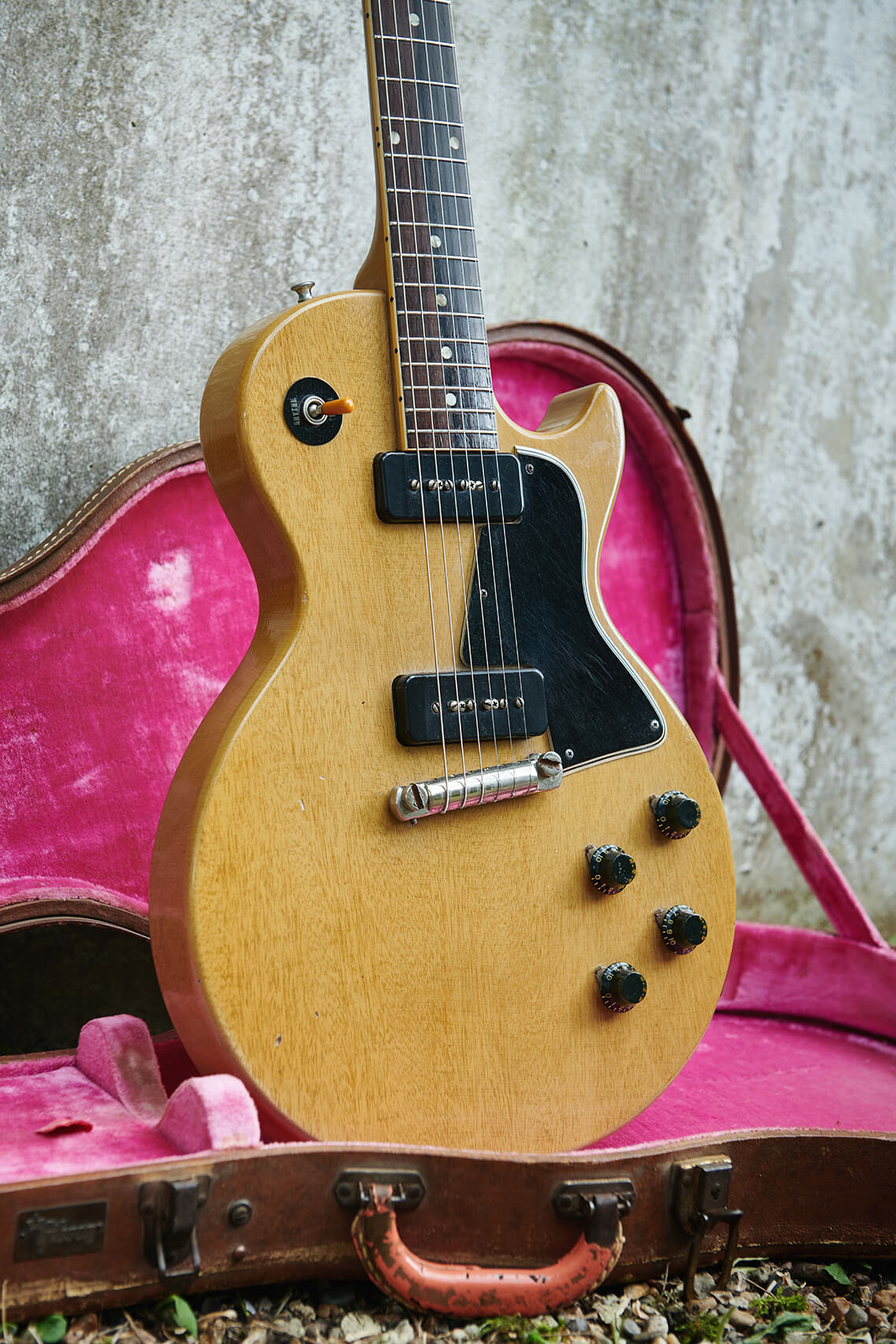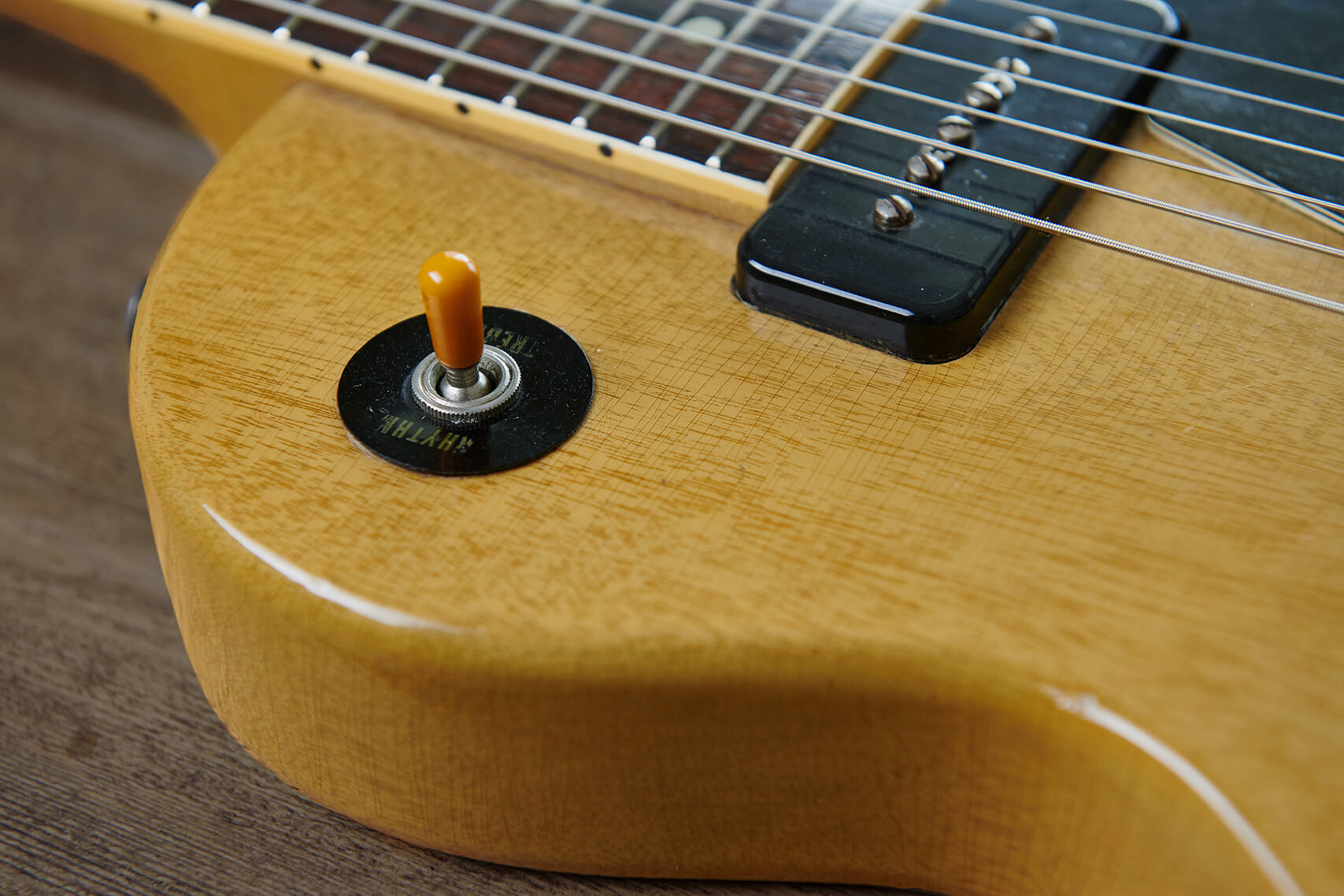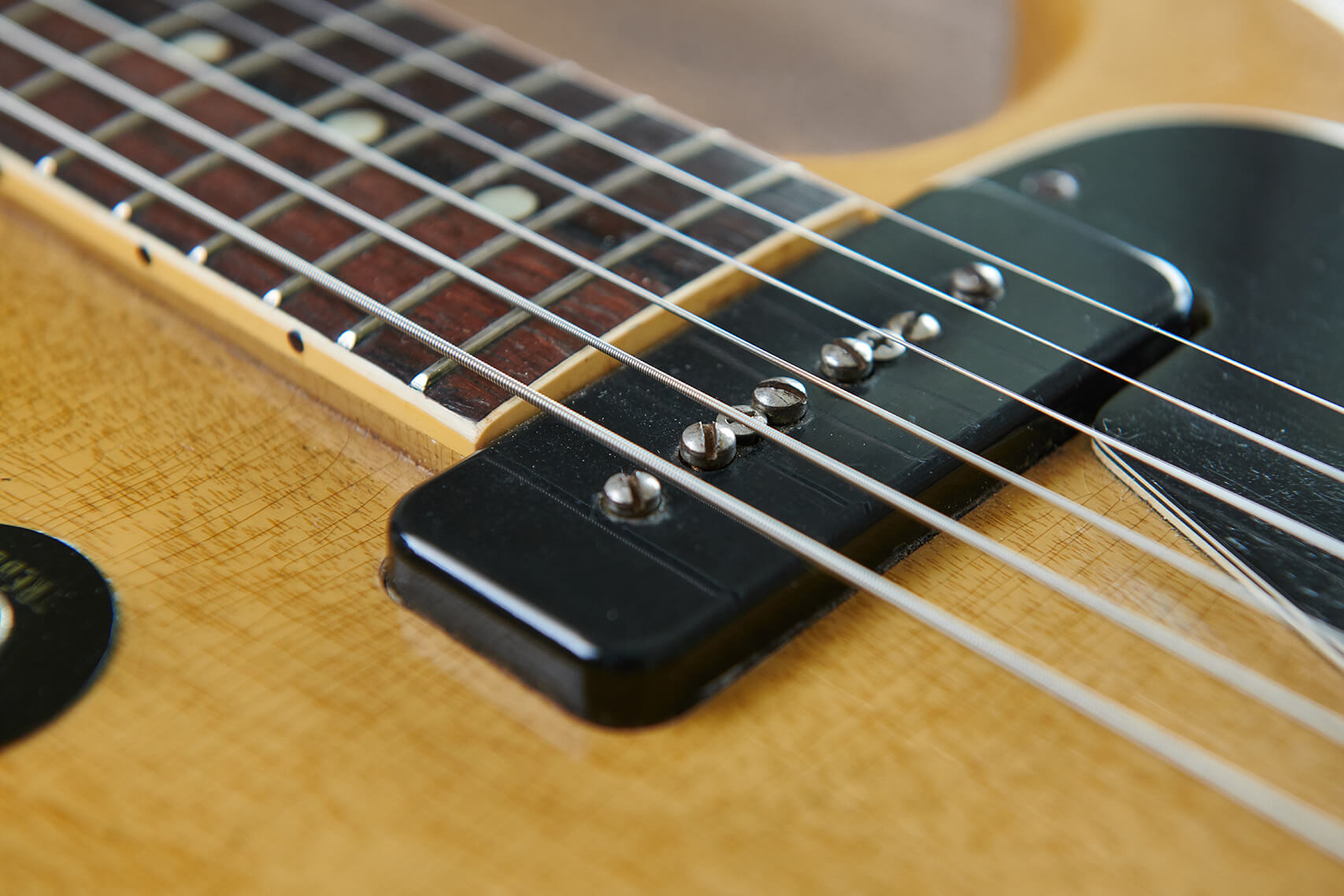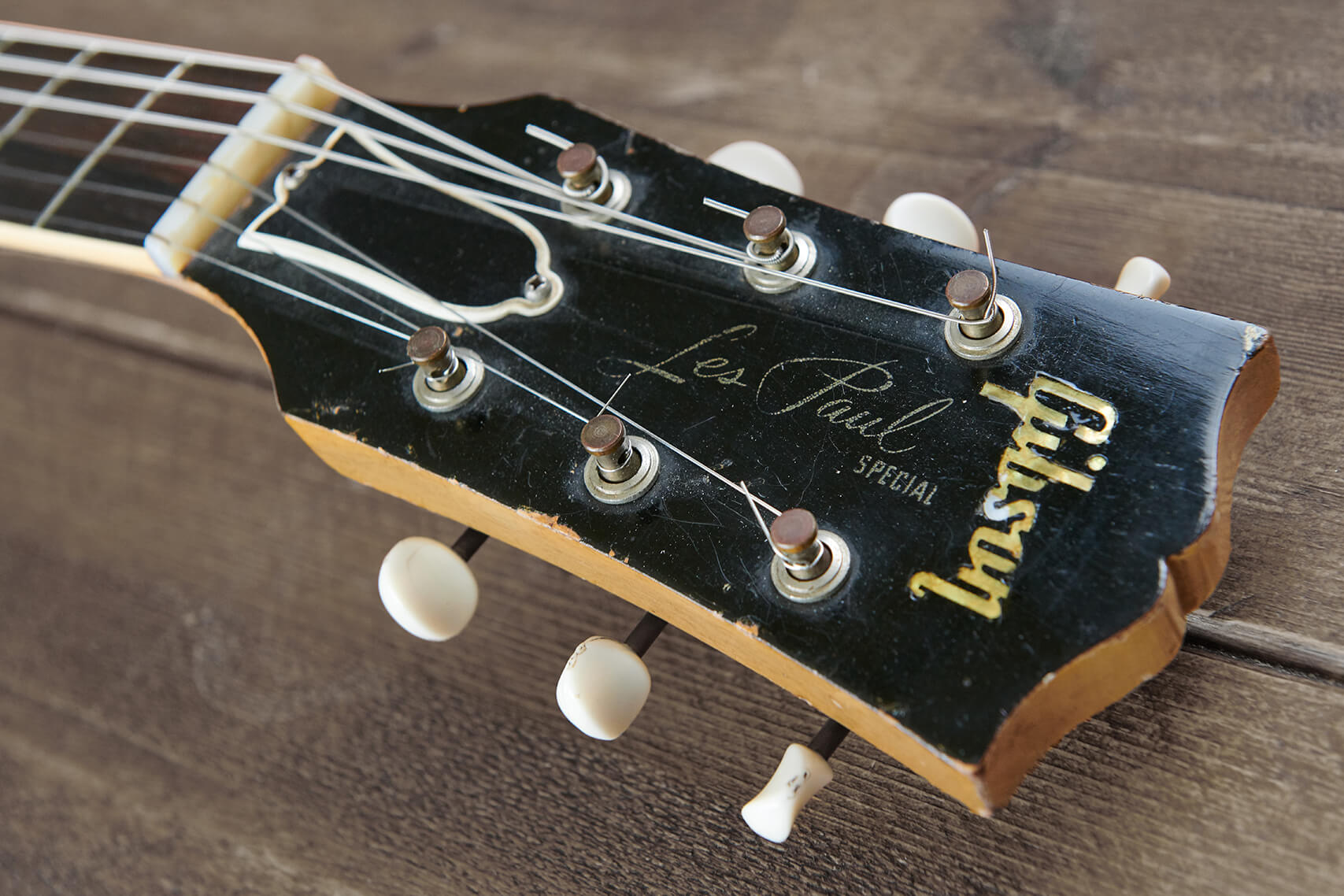Related Tags
Photographer Phil Bourne’s small but perfectly formed guitar collection
From punk bassist to P-90 advocate, this British commercial and editorial portrait photographer has assembled an enviable selection of vintage instruments along the way.

All images: Phil Bourne
Over the years we’ve featured just about every type of guitar collection imaginable – from multi-million-dollar rockstar arsenals to collections that focus primarily on one specific model, or even one custom colour. Don’t believe us? There really is someone out there who only owns Fiesta Red Strats. Dozens of them.
Maybe it’s because the pursuit of clutter-free minimalism has become so popular in recent years, but there’s something especially appealing about the notion of curating a small but discerning collection of vintage guitars. Just four or five instruments, perhaps, that tick all the boxes sonically and represent some of the very best examples of their type.
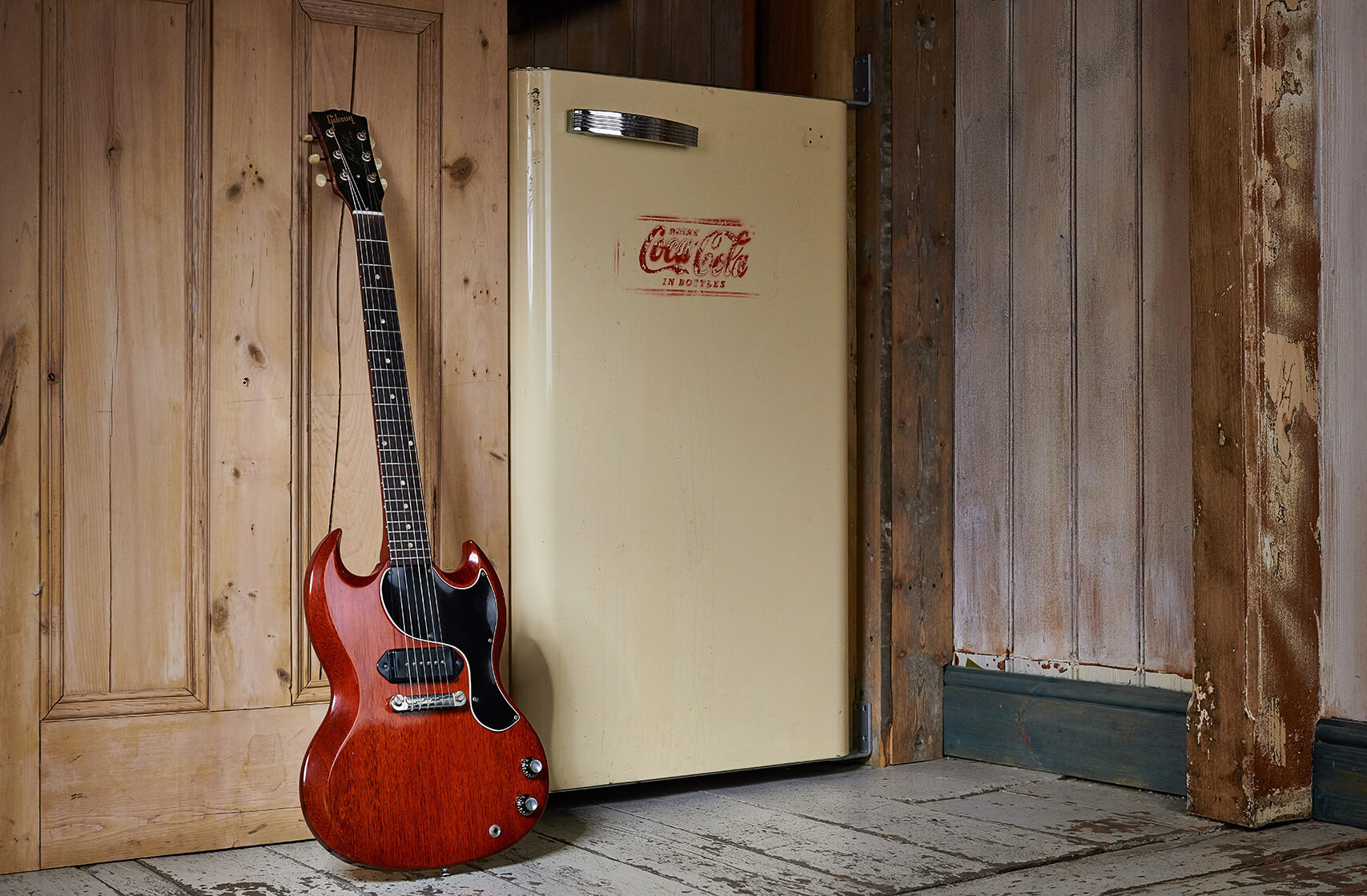
Almost by accident, London-based photographer Phil Bourne has arrived at precisely that point. But like most guitarists, he’s been on a long journey to get there, including a stint as a bass player in the punk era, selling guitars to fund photography gear and plenty more besides. But before we get into all that, let’s wind back the clock to Phil’s childhood in the North West of England and discover how his obsession took hold.
“The first time that I ever thought about playing guitar was when I was about nine years old. I had a schoolmate whose parents had a lot of Beatles records. I’d go around to his house and we’d play Beatles records and jump around using tennis rackets as guitars. The song that sticks in my mind as making me want to get a guitar and be in a band is Come Together. So that was where the seed was planted. Shortly after that I discovered T. Rex and was completely blown away. After hearing Jeepster for the first time, I knew that I had to get a guitar as soon as possible. That was an exciting sound.”
“I have owned my Jazzmaster the longest and if I could only keep one, this would be the one”
What was your first guitar and what was your first ‘proper’ guitar?
“The first guitar I had was a cheap Spanish guitar – a Kapok. I got it as a Christmas present. I kept the nylon strings on it for a while but then changed them for steel strings. The action on it was about an inch high! I did manage to learn how to play an E, an A and a D chord on it, as well as a few basic riffs. I ended up painting it with white emulsion to make it look less like a Spanish guitar.
“I was going to form a band with a couple of school mates, and their parents bought them both six-string electrics. I still had my acoustic, which I knew how to play more chords and riffs on than them, but a band with three guitars was unheard of in our small world so I then opted to get an electric bass – a Columbus Jazz Bass. At the time I was a big Slade fan and was struck by Jim Lea’s basslines, so that sold me on the idea of playing bass. Ironically that first attempt at getting a band going never got off the ground but I continued playing bass as my main instrument in a number of other bands for the next five years or so.
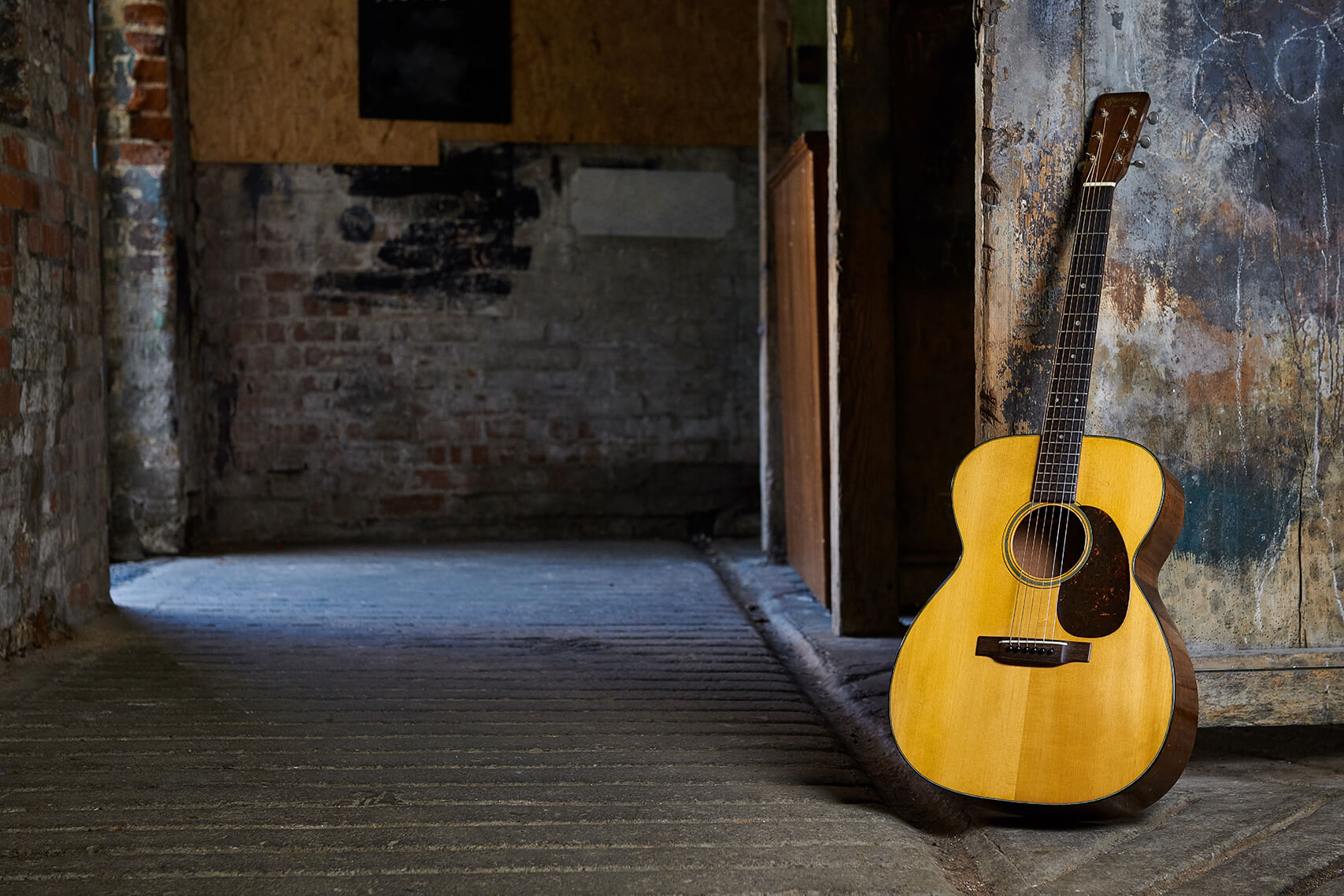
“My first ‘proper’ guitar, then, was actually a bass – an Olympic White 1966 Fender Mustang Bass. After that I got a burgundy ’74 Rickenbacker 4001, which I used in my first professional gigs with The Drones and then the Colours Out Of Time. After that I switched back to guitar, swapping the Ricky 4001 for a ’69 black Gretsch Roc Jet.”
Did you ever feel like music could be a career? Or was photography always a more viable option?
“Playing music for a living was always the thing that I wanted to do more than anything else. I was a professional musician for a few years until I had to get a ‘proper’ job. Being a ‘professional’ back then consisted of signing on the dole while rehearsing, gigging and recording. When I was 17, I moved to Manchester and joined The Drones – who, along with The Buzzcocks and Slaughter & The Dogs, were one of the original Manchester punk bands – to replace their original bass player who had just left. The rest of the band were quite a bit older, more experienced and worldly wise than me so I learned a lot very quickly. We played at places like The Marquee Club, The Music Machine, The Moonlight Club, and The Factory as well as touring with Sham 69. It was quite an experience for a 17 year old.
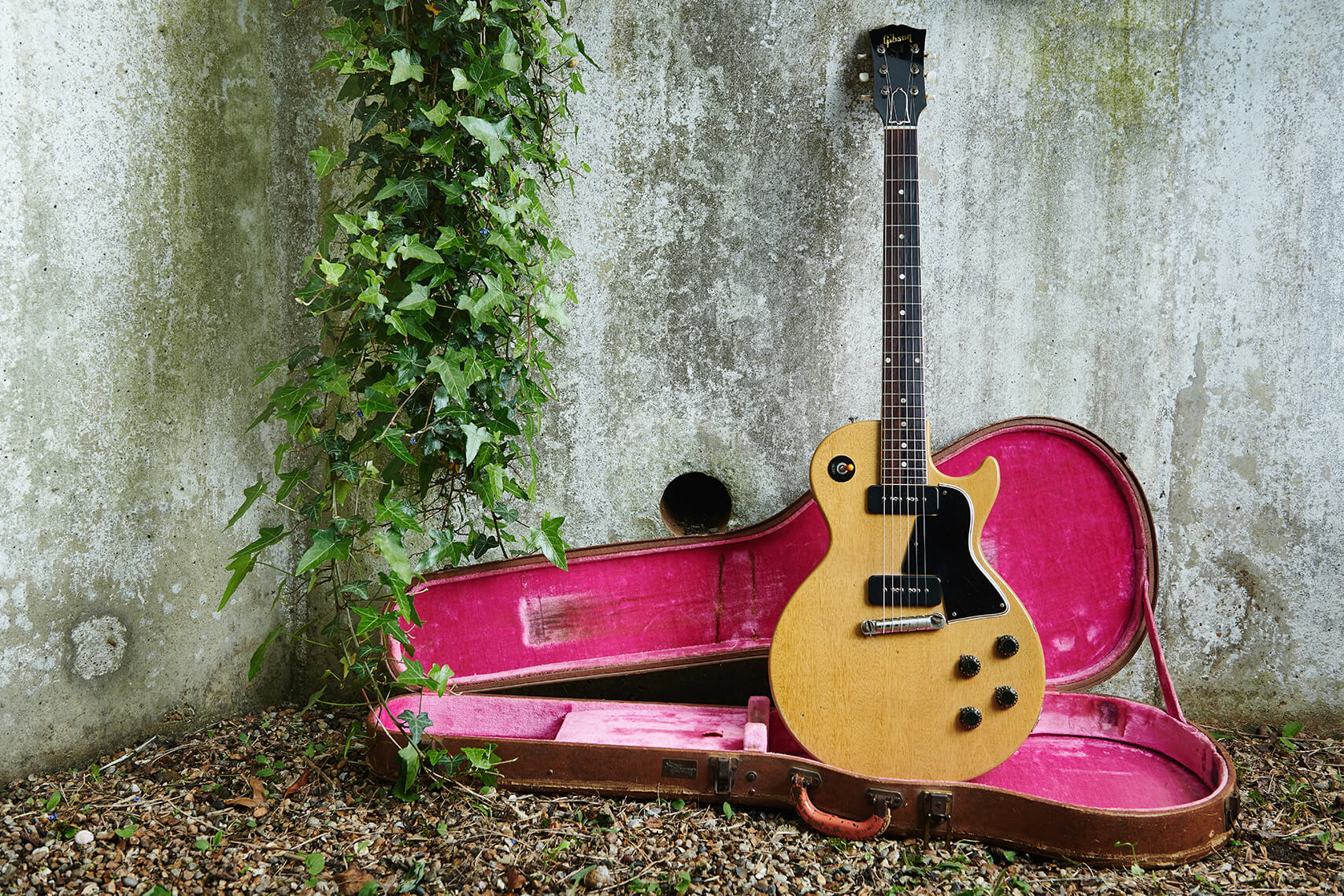
“After that I played briefly in a band called The Pits before joining The Colours Out Of Time. The Colours would release two independent singles – both to critical acclaim – record a Peel session and play a residency at Julian Cope’s Club Zoo with The Teardrop Explodes. Despite being hotly tipped by both the NME and Melody Maker the Colours failed to progress and broke up. It was partly due to lack of management and partly due to an aloof provincial arrogance. I then moved to London with the intent of getting another band together – at that point I had switched back to guitar and started writing songs on my own – but soon discovered that I needed to get a ‘proper’ job just to survive. Living in London required a lot more cash than living in the North West.
“I discovered T. Rex and was completely blown away. I knew that I had to get a guitar as soon as possible – that was an exciting sound”
“After a couple of jobs I eventually ended up in magazine publishing. I got seriously into vintage guitars after getting a copy of Tom Wheeler’s American Guitars book. My day jobs sometimes afforded me the means to buy a nice ‘old’ guitar from time to time.
“I first got into photography when I was in The Colours Out Of Time, shooting black and white film, but never really considered it as a possible profession until much, much later. It wasn’t until I found myself out of the magazine publishing business and bought a DSLR that I got bitten by the photography bug again. I then decided to put my efforts into making a new career out of that and to see how far I could take it. I was inspired by the possibilities of digital photography coupled with the power of visual storytelling.”
What parallels do you see between music and photography?
“I think music and photography have a lot in common. They are both a perfect marriage between art and technology, both are means of expressing how we see and feel life and the world, and both can be quite transcendental.
“When I decided to pursue photography as a profession the first thing I shot was live music. I managed to get in with one of the London picture agencies and shot all kinds of gigs from up-and-coming bands at places like the Barfly to stadium acts like Coldplay, REM or the Foo Fighters – and loads in between. I think that being a musician definitely helped when it came to timing and anticipating the ‘decisive’ moments in a live performance. From there I started to do promo shoots with bands, either longer pre-planned shoots or quick backstage portraits. Again I think that being a musician helped especially in terms of communication – I could speak their language and have empathy and understanding. Occasionally I would get into long conversations about gear with fellow guitar geeks.”

How did you arrive at the guitar collection you have today and is there a story behind each of the instruments?
“I did trim down my vintage collection a bit over the last decade – mainly to fund photography gear! Though I will no doubt be adding to it again. One can never have enough guitars, right? Especially great vintage ones.
“My present vintage guitars comprise a ’60 Fender Jazzmaster in Daphne Blue, a ’63 Gibson Les Paul/SG Junior, a ’53 Martin 000-18 and most recently a ’56 Gibson Les Paul TV Special. All of these are keepers. My other guitars are reissues – a ’62 Strat reissue, a 2019 Les Paul TV Special (these are the two I gig with) as well as an early ’80s Tokai Love Rock and a ’62 reissue P-Bass. I recently sold a Les Paul R8. In the recent past I have let a few other vintage guitars go that I didn’t quite get on with, like a ’65 Gibson SG Special, a ’64 Gibson Firebird III and a ’66 Fender Electric XII. The Firebird looked really cool but was just too top heavy for my liking and the Electric XII I hardly ever played, so they went. The SG Special I sold to fund some photography gear – I decided to keep the ’63 Junior instead which I prefered.
“Music and photography have a lot in common. They are both a perfect marriage between art and technology, and both can be quite transcendental”
“I have owned my Jazzmaster the longest and if I could only keep one, this would be the one. It has a great deal of sentimental value. I’ve used it at loads of gigs and on a lot of studio recordings, though it is now ‘retired’ at least as far as live action is concerned. Just before I got the Jazzmaster I had a ’62 Gretsch Country Gentleman which unfortunately got stolen in a burglary. Luckily it was insured so I bought the Jazzmaster with the insurance money.
“There was a bit of serendipity about how I came across this one. I’d been wanting a Jazzmaster for some time – Tom Verlaine was a big influence – and I had a vision of a Daphne Blue Jazzmaster. I thought if I could find one that would be really cool; I naively had no idea how rare they were. So when the insurance money from the Gretsch arrived I headed straight down to Vintage And Rare Guitars, then in Earls Court. This was long before websites existed so I had no idea what they had in stock. As I went downstairs I spotted a Daphne Blue Jazzmaster in the corner and knew straight away that was the one. I played it for a while anyway but I’d already made my mind up.”
“The ’53 Martin 000-18 is one of the sweetest sounding acoustics I’ve ever heard. When I was trying this one out, I compared it to both a 60s and a 70s 000-28 – both great guitars in their own right – but the ’53 just blew both of them out of the water. There wasn’t just a bit of a difference in tone there was a huge difference. It was a real eye opener. The ’53 was considerably louder but the tone was much more focused and the harmonics just rolled off it effortlessly. It makes me smile from ear to ear whenever I play it. It’s a really great guitar.
“The most acoustically resonant solidbody guitar I’ve owned is the ’63 Les Paul/SG Junior. It’s a very lively guitar. The dogear P-90 sounds fat and aggressive but also retains a clarity, which a lot of the modern P-90s I’ve heard don’t seem to have. It’s got an interesting tapered neck, which I believe is common on ’63s. It’s quite slim, almost like a ’60, at the nut end, then ventures into ’59 territory around the fifth fret before going into a full ’57-’58 type profile from the 12th onwards.”
What about your latest acquisition, the 1956 TV Special?
“I’ve been interested in Les Paul TV Specials since a very young age, when I first saw a picture of Marc Bolan playing one and also a picture of Johnny Thunders with one on the cover of Too Much Too Soon. Over the years a couple have eluded me – they were snapped up before I had the chance to get the cash together – but I’ve been fortunate enough to be in a position to acquire an original ’56 Special recently.
“The ’53 Martin makes me smile from ear to ear whenever I play it. It’s a really great guitar”
“I just love these guitars – the look, the feel, the sound, everything. They are extremely versatile too. Play them clean and you can get twangy country tones, like a fat Tele on the bridge pick up, or chiming jangle in the middle position, or mellow jazzy tones on the neck pick up. Crank them up a bit and that’s when things really start to get interesting. Everything from growling punky rhythm, to screaming lead, to the classic Les Paul ‘woman’ tone. They have it all really.”
Is there ‘one that got away’?
“There are probably two guitars I’ve owned that ‘got away’. The ’62 Gretsch Country Gentleman was the same spec as George Harrison’s famous one – stairstep Grover tuners, double flip-up mutes and two Filter’Trons. I had it for a year and then it got stolen, never to be seen again.
“The other one that got away was a ’64 Epiphone Casino in mint condition – the same year and spec as John Lennon’s. I literally only had that one for three days. I bought it from a well-known vintage dealer, and unbeknown to them and to me it was recently stolen. So I had to hand that one back and the dealer let me pick a ’64 Firebird III which was the same value. The Casino was reunited with it’s true owner. It was the cleanest example I’ve ever seen and I was looking forward to playing that one a lot, but c’est la vie.”
Finally, is there anything that you are planning on adding to your collection?
“I’m really into Les Paul Juniors and Specials now. It’s taken me a long time to discover the greatness of a P90 on a slab of mahogany. So a double cutaway Special and a single and double cutaway Junior would be top of my wishlist.”
Find out more at philbourne.com.

